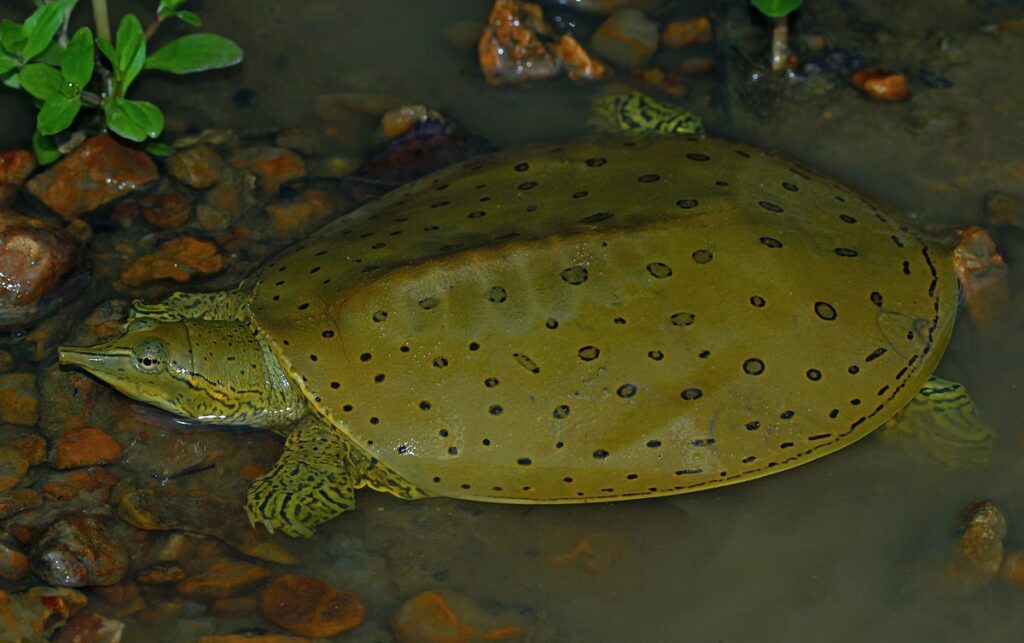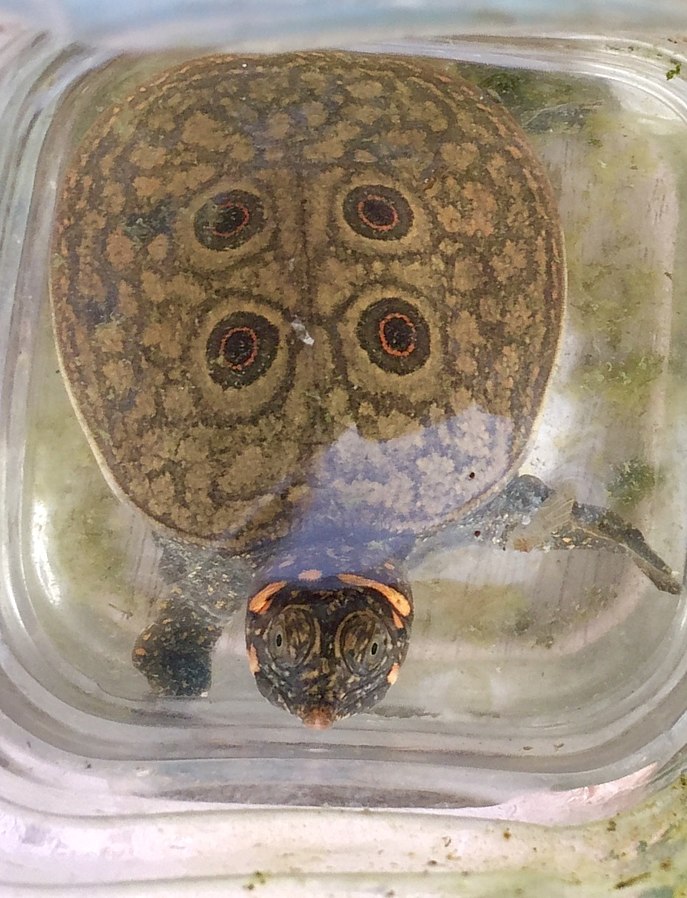For the first time known to conservation science, nests of the critically endangered Burmese peacock softshell turtle (Nilssonia formosa) have been found and protected, allowing baby turtles to hatch successfully. While we love updating you on every year’s careful work finding, protecting, and raising the next generation of rare turtles here in New England, this incredible breakthrough also serves as a stark reminder that, for many turtle species, we are still learning the bare basics of their lives in a race against extinction.
The softshell turtles are a fairly large and widespread family. Their name comes from the lack of hard plates (called scutes) on the outer surface of their shells, which instead are leathery and flexible. Softshells have the remarkable ability to breathe water by performing gas exchange through thin, highly vascularized tissues in their mouth, allowing them to stay underwater much longer than other turtles. While we have three species of softshells here in the USA, much of the family’s most imperiled biodiversity is in South Asia. Softshells are a traditional food across much of their range and are farmed both here and abroad, but many species are also still hunted in the wild. Hunting pressure, loss of sensitive freshwater habitats to development and pollution, and the effects of climate change are all serious threats to rare softshells.

The beautiful Burmese peacock softshell is named for the striking pattern of large spots on its carapace, reminiscent of the “eyespots” on a peacock’s tail. Its range is not fully known, but the bulk of the turtle’s remaining distribution definitely falls within Myanmar. Much of this beautiful species’ life history has remained unknown to conservation science, but since it is listed as “Critically Endangered” by the IUCN Red List, effective conservation is unlikely to succeed without more understanding of the animal. Fortunately, a collaboration between residents around Indawgyi Lake in Kachin, northern Mynamar, and local staff members of the international conservation organization Fauna & Flora has located and protected five nests until hatching for the first time in this understudied species. Remarkably, the nests took nine months to hatch after being laid – three times longer than many turtles’ incubation periods.

Fauna & Flora staff credit the “turtle guardians” – local residents who were paid and trained to find and protect turtle nests – with this amazing success. This close collaboration between the people who live at the turtles’ nesting grounds and conservation professionals echoes the relationships we here at Zoo New England strive to build with the “turtle hosts” whose Massachusetts yards and gardens are chosen by our own rare turtles. With strong community involvement, the future for the Burmese peacock softshell and other rare species around the world can be made a lot brighter.
For more details and pictures and video of the baby turtles, check out the New York Times coverage here.
